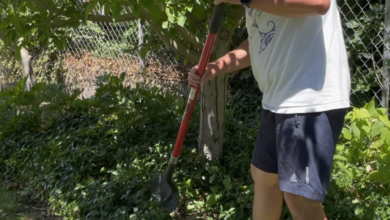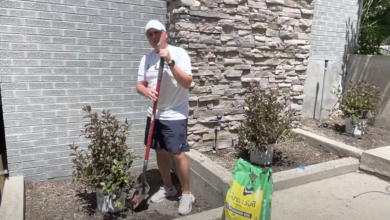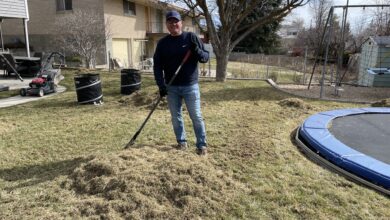Revitalize Your Lawn! The Benefits and How-To-Of Overseeding

A healthy, green lawn is a beautiful sight to behold. Achieving this type of lawn can be a challenge if your lawn has been neglected for a while. If your lawn is looking patchy, thin, or generally unhealthy, there is a simple solution to this problem: overseeding. By overseeding your lawn, you can revitalize it In this post, we’ll explore what overseeding is, the benefits of overseeding, and how to overseed your lawn.
What is overseeding?
Overseeding is the process of spreading grass seed over an existing lawn to thicken it up or to introduce new grass species. Over time, lawns can become thin due to factors like drought, disease, pests, and heavy foot traffic. By overseeding, you can increase the density of your lawn, improve its color, and fill in bare patches. Additionally, overseeding allows you to introduce new grass varieties that are more suited to your local climate, soil type, or maintenance schedule.
Benefits of overseeding
- Improved appearance – A thick, green lawn is much more attractive than a patchy or sparse one. By overseeding, you can make your lawn look fuller and healthier, which can boost your home’s curb appeal.
- Increased Density
Overseeding your lawn will increase the density of your grass, filling in any thin or bare spots. This will create a fuller, healthier lawn that looks great all year round.
- Improved Health & Resilience
Overseeding your lawn will also improve its overall health. The new grass seed will be more resistant to disease and pests, and will be better able to withstand drought and extreme temperatures.
- Reduced soil erosion – A thick lawn can help prevent soil erosion by anchoring the soil with its roots. This can be particularly useful if you live in an area prone to heavy rainfall or windy conditions.
- Increased biodiversity – By introducing new grass species, you can increase the biodiversity of your lawn, which can support a range of beneficial insects and wildlife.
Now that you know the benefits of overseeding your lawn, you may be wondering if your lawn actually needs it. Here are some signs that your lawn may need to be overseeded:
- Thinning Grass
If you notice thinning grass in certain areas of your lawn, this is a good indication that it’s time to overseed. Thin grass can be caused by a variety of factors, including disease, pests, and foot traffic.
- Bare Patches
Bare patches are another sign that your lawn may need to be overseeded. Bare patches can be caused by a variety of factors, including pet urine, disease, and overuse.
- Weeds
If weeds are taking over your lawn, this is a sign that your lawn may be in need of overseeding. A healthy lawn will naturally push out weeds, so if you’re seeing an abundance of weeds, it’s likely that your lawn is struggling.
- Age
Finally, if your lawn is more than 10 years old, it may be time to consider overseeding. Over time, grass can become tired and thin, and overseeding can help to revitalize it and give it new life.
If you notice any of these signs, it’s a good idea to consider overseeding your lawn. By doing so, you can create a thicker, healthier lawn
How to overseed your lawn
- Choose the right time – The best time to overseed depends on your grass species and your location. Generally, the best time to overseed is during the spring and fall when temperatures are cooler, and there is more moisture in the soil.
- Mow your lawn – Before overseeding, mow your lawn as short as possible without scalping it. This will allow the grass seed to come into direct contact with the soil, which will give the new grass seed a better chance to take root and grow.
- Aerate your lawn – To improve soil-to-seed contact even further, you can aerate your lawn with a core aerator. This will create small holes in the soil, allowing the grass seed to penetrate the soil more easily.
- Spread the seed – Once your lawn is prepared, it’s time to spread the seed. Use a seed spreader to distribute the seed evenly over your lawn. Make sure you follow the instructions on the seed bag to determine the correct amount of seed to use.
- Water your lawn – After you have spread the seed, it’s important to water your lawn thoroughly. This will help the seed to germinate and establish roots. Water your lawn regularly, making sure the soil stays moist but not waterlogged.
6: Maintain Your Lawn
Three to four weeks after your new grass seed has started to grow, it’s important to maintain your lawn properly. Mow your lawn regularly, but make sure you don’t cut it too short, as this can damage the new growth. Fertilize your lawn regularly and water it when necessary to keep it healthy and green.
Overseeding your lawn is a simple and effective way to revitalize your lawn and improve its overall health and appearance. By following the steps outlined above, you can create a thick, green lawn that will be the envy of your neighbors.




